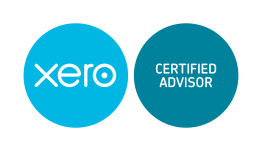Online Payroll Essentials Course - £49 (Normal Fee £199)
A complete beginner's guide to operating Payroll (2015-2016 Tax Year)
Our online Introduction to Payroll training course titled "Payroll Essentials" mirrors our tutor-led courses which are presented by qualified chartered accountants.
"We are doing the books for a new company and both found it really informative and it has given us the confidence to run the payroll for the new company." - Kelly who completed the course on 23 January 2016.
The training course is an interactive video tutorial with full sound and screen recordings (not just pages and pages of text). The course provides an opportunity for you to:
- Learn from the expert guidance of a qualified Chartered Accountant with over 15 years experience of Accounts and Payroll;
- View demonstrations such as registering as an employer or claimimg the recently introduced Marriage Allowance;
- Master PAYE tax codes and their importance;
- Understand NI (National Insurance) categories and rates;
- Learn about the £2,000 Employment Allowance;
- Understand RTI (Real Time Information) requirements and penalties;
- Undertake knowledge tests.
If you have an immediate requirement for Payroll training, please contact us as we can arrange this remotely on the same day.
Access to the course is available for one month enabling you to undertake the course several times. An internet connection and an up-to-date browser is required to undertake the online training. No refunds or cancellation once log in details have been provided.
The online course contents are as per our classroom based half day Introduction to Payroll course and includes the following 10 sections (Duration: Approx. 3 Hours):
Section 1 – Introduction
- Course contents, etc.
- Aims & Objectives
- PAYE - Introduction
- Employers' responsibilities
- Employee Information
- Registering as an employer with HMRC
- Knowledge Test # 1
Section 2 – PAYE Tax Codes & Tax Rates
- PAYE tax codes and their importance
- Tax free allowance explained
- Meaning of Letters in PAYE tax codes
- 2015/2016 tax rates
- Tax computation examples
- Tax computation exercise
- Knowledge Test # 2
Section 3 – Marriage Allowance
- Marriage Allowance introduction
- Marriage Allowance example
- How to SAVE £212 TAX if you qualify
- Registering for the Marriage Allowance with HMRC
Section 4 – PAYE Forms & PAYE Tax Calculations
- P45 Form and sample
- P46 Form and sample
- Starter Checklist
- Choice of tax codes to assign to new employees
- P60 form and sample
- P11D form and sample
- Cumulative PAYE Tax Calculations - Months 1, 2, 3 and 6
- Non-Cumulative PAYE Tax Calculations - Months 6 and 7
- How to apply for a Tax Refund for overpaid tax
- Knowledge Test # 3
Section 5 – National Insurance Categories & Rates
- National Insurance introduction
- How to obtain a National Insurance Payment History from HMRC
- National Insurance categories - Not contracted-out
- National Insurance categories - Contracted-out
- New National Insurance categories M and Z
- National Insurance rates - Not contracted-out
- National Insurance rates - Contracted-out
- National Insurance rates - Employers
- Employee NIC computation example
- Employer NIC computation example
- Knowledge Test # 4
Section 6 – Employment Allowance
- Employment Allowance eligibility
- How to claim £2,000 Employment Allowance
- Tax / NICs tax payment dates
Section 7 – Directors' National Insurance Contributions
- Special NIC rules re company directors
- Directors' Annual NIC Allowance
- Example Director NIC computation - Tax Month 1
- Example Director NIC computation - Tax Month 2
- Example Director NIC computation - Tax Month 3
- Example Director NIC computation - Tax Month 4
- Example Director NIC computation - Tax Month 5
- Knowledge Test # 5
Section 8 – RTI Real Time Information
- Real Time Information introduction
- RTI reports - EAS
- RTI reports - FPS
- RTI reports - EPS
- RTI reports - EYU
- RTI reports - NVR
- Knowledge Test # 6
Section 9 – RTI Penalties
- RTI penalties
- Late payment penalties
- HMRC penalty relaxations
- Obsolete forms as result of RTI introduction
Section 10 – Summary
- Review of the course
- Knowledge Test # 7




